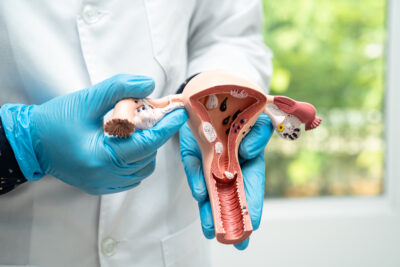With a prevalence rate of 10%-17%, gestational diabetes mellitus (GDM) is one of the most common conditions that affects pregnant women worldwide. Still, attempts to develop a reliable screening method to predict it early in the pregnancy have so far failed. Part of the reason is that markers identifying higher risk are either difficult to gauge and/or have a low prediction accuracy.
Screening for GDM is usually recommended at 24 weeks of pregnancy or later. With early screening, though, opportunities for timely intervention, prevention and pregnancy outcomes improve.
The researchers examined the biological samples and follow-up data of 2545 pregnant women from Debrecen University’s biobank – as the outcome of the pregnancy and later complications are already known. They analyzed several parameters including oxidative–nitrative stress-related parameters, steroid hormone, and metabolite levels.
“The placenta is a ‘steroid factory’; the quantity and composition of the steroids produced varies in different pregnancy pathologies,” explains Eszter M. Horváth, associate professor at the Department of Physiology of Semmelweis University, corresponding author of the study. If the levels of the steroids tested change, it can indicate some kind of alteration, she adds.
They selected the five most suitable markers for indicating minor alterations at the early phase of pregnancy.
We need to spot signs at an early stage when the deviations are still minimal, which is far more challenging for an otherwise healthy pregnant woman than an elderly diabetic person,
says Dóra Gerszi of the Department of Obstetrics and Gynaecology, Semmelweis University, first author of the research published in the Journal of Clinical Endocrinology and Metabolism.
The five novel risk estimation markers are fructosamine, which shows the average blood glucose over the previous 2 to 3 weeks, soluble urokinase plasminogen activator receptor (suPAR), whose levels are correlated with levels of other inflammation markers and tend to be higher in type 1 and type 2 diabetes patients, and the steroid hormone cortisol, cortisone and 11-deoxycorticosterone.
Using these new predictors and the well-established risk factors such as age, weight, etc., the researchers created a method that predicts the development of later-onset GDM (24th-28th weeks of pregnancy) with nearly 100% accuracy during the first trimester.
Our model has significantly higher predictive power than any previously published one: with a specificity of 96.6% and sensitivity of 97.5%,
Gerszi notes. “At the same time, the method does not require any equipment that an average laboratory would not have,” she adds.
Early detection is crucial as GDM affects both the life of the mother and the fetus. The fetal environment can lead to lifelong changes, including an increased risk of type 2 diabetes and obesity.
If we detect a higher-risk patient and start treatment three months earlier, a much healthier person can be born who can keep this advantage for the rest of their life,
says Szabolcs Várbíró, corresponding author, professor at the Department of Obstetrics and Gynaecology, Semmelweis University.
Starting the treatment of the mother early on, e.g. by advising her a diet, can prevent major weight gain and delay the onset of type 2 diabetes that 60% of those with gestational diabetes will develop within ten years.
However, keeping blood glucose levels and the mother’s weight within normal ranges during pregnancy can lower the risk of the disease and its subsequent complications.
The next step is making the patent-pending procedure available for a wider circle: Semmelweis University will first screen the patients of its Obstetrics and Gynaecology Department.
Cover photo (illustration): iStock by Getty Images – dragana991


